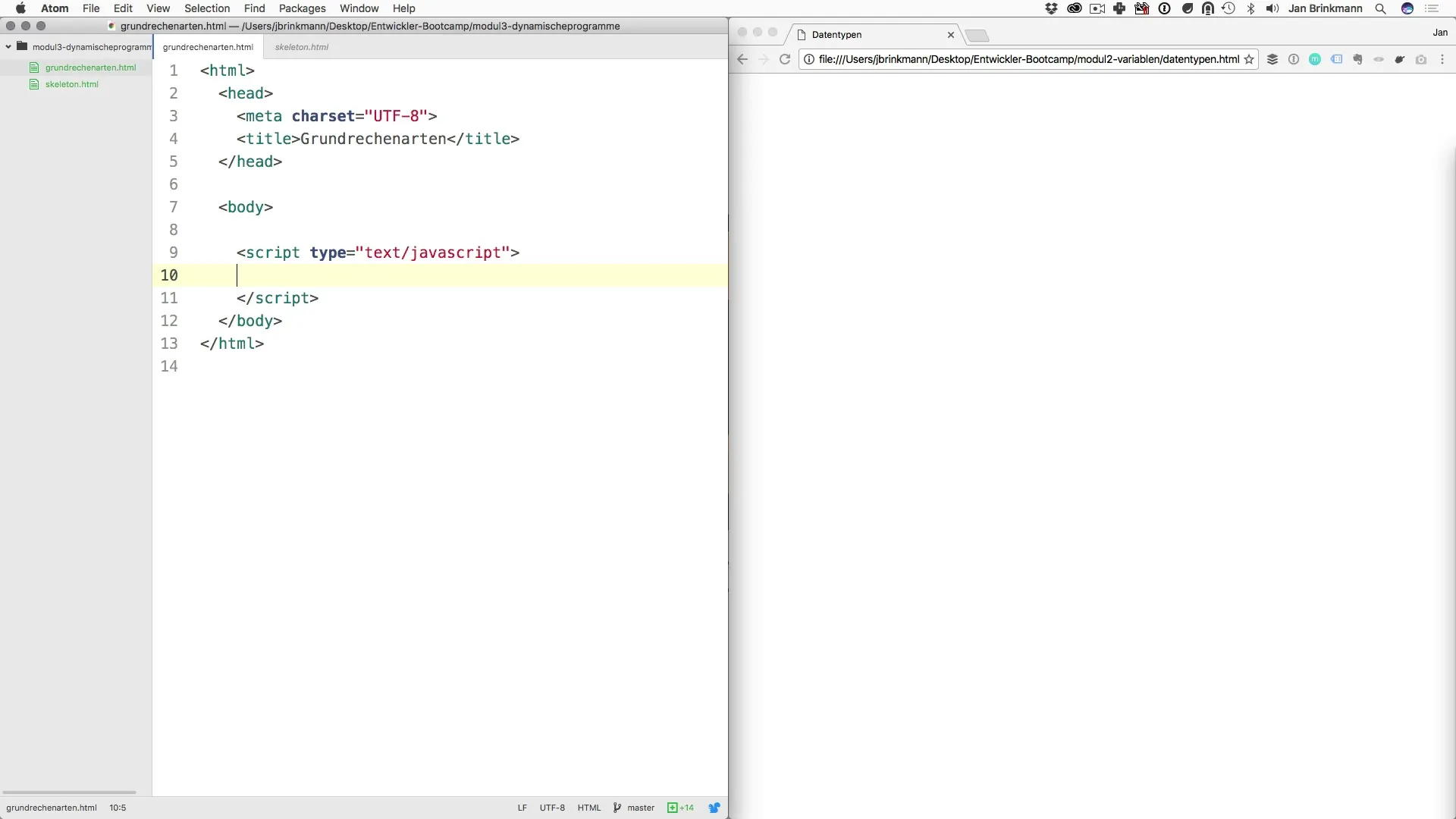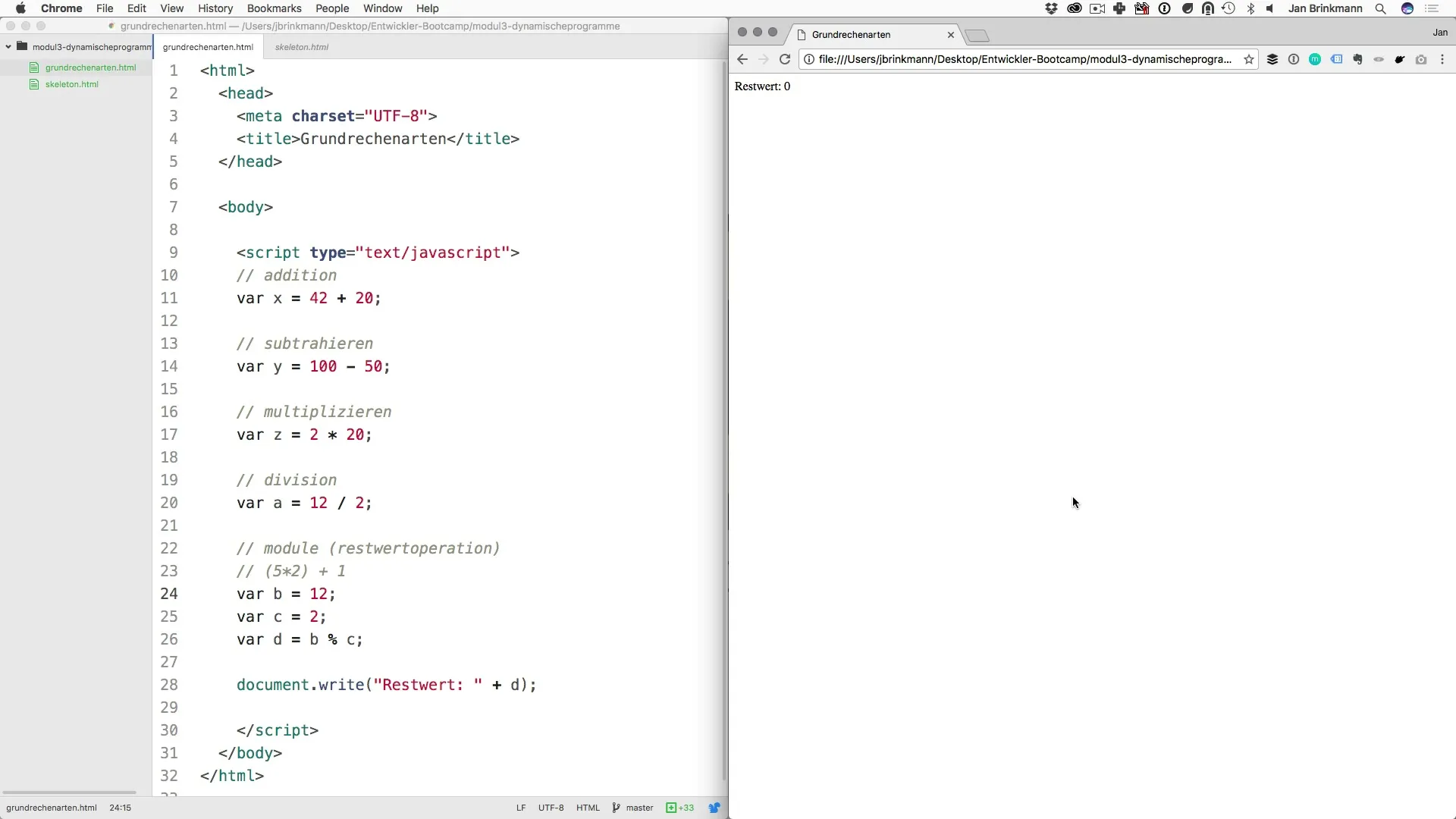Software-Programming is primarily focused on the mathematical operations that are used in programming languages. Arithmetic operators are the foundation for calculations in the digital space. They play a crucial role in manipulating data and performing calculations. In this guide, you will dive deep into the basic arithmetic operations of programming and learn how to apply them effectively.
Key Insights
- The main arithmetic operators are addition, subtraction, multiplication, division, and modulo.
- Each program uses specific symbols for these operations, which may vary depending on the programming language.
- Understanding these basic operations is essential for developing more complex algorithms.
Addition
Addition is the simplest arithmetic operator. It is used to sum two values.
The result of this calculation is 62. The plus operator is used here to represent the summed values.

Subtraction
Subtraction is the next operator you need. It is used to subtract one value from another.
The result of this calculation is 50, after subtracting 50 from 100. With this operator, you can efficiently reduce values.
Multiplication
Multiplication is a fundamental mathematical operation, represented by the asterisk operator (*) in most programming languages.
The result is 40, as 2 is multiplied by 20.
Division
Division can cause some confusion, especially if you are used to regular calculators. In most programming languages, division is represented by a slash (/).
The result of this division is 6. Here, it is important to note the different representations of division.
Modulo
The Modulo operator returns the remainder of a division. This is particularly useful for checking whether a number is even or odd.
The result in D would be 1, because 11 contains 2 once and the remainder is 1.
To determine if a number is even, you can perform the modulo operation between 2 and the number. A remainder of 0 means the number is even, while a remainder of 1 indicates an odd number.

Increment and Decrement
In addition to the basic operations, there are also the concepts of incrementing and decrementing. These are often used in programming languages to increase or decrease variables by 1.
After incrementing, i will now be 2.
Here, J will be 9 after decrementing.
Summary - Arithmetic in Software Programming: From Addition to Modulo
You have now gained an overview of the basic arithmetic operations in software programming. You can now effectively use addition, subtraction, multiplication, division, modulo, incrementing, and decrementing. These concepts are key to further developing your programming skills.
Frequently Asked Questions
What are the basic arithmetic operations?The basic arithmetic operations are addition, subtraction, multiplication, and division.
Which operator is used for multiplication?In most programming languages, the asterisk operator (*) is used for multiplication.
How does the modulo operator work?The modulo operator returns the remainder of a division, which is particularly useful for checking evenness or oddness.
What does incrementing and decrementing mean?Incrementing increases the value of a variable by 1, while decrementing decreases the value by 1.
What is the significance of division in programming?Division is used to divide one value by another, often represented by the slash (/).


